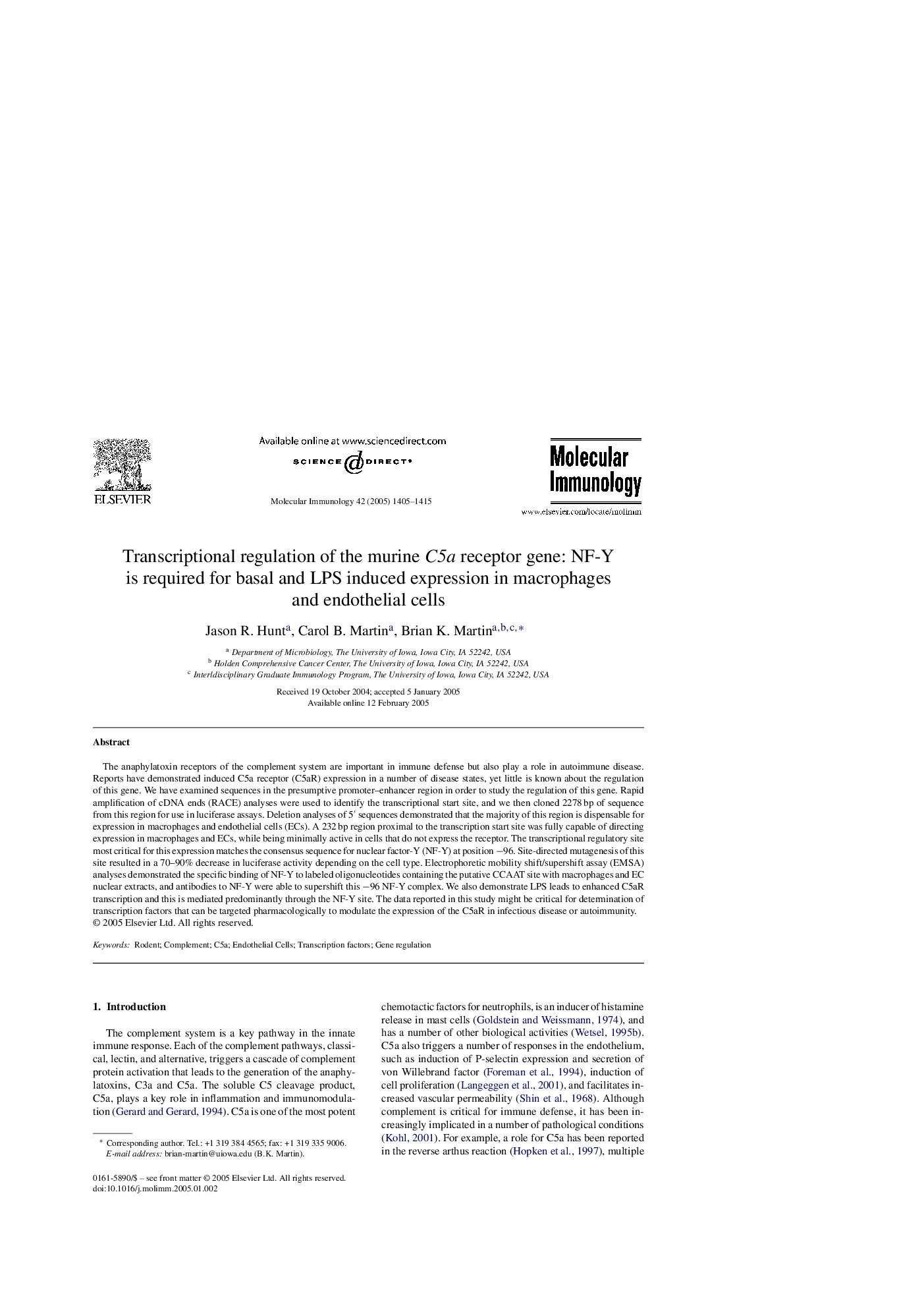| Article ID | Journal | Published Year | Pages | File Type |
|---|---|---|---|---|
| 9141915 | Molecular Immunology | 2005 | 11 Pages |
Abstract
The anaphylatoxin receptors of the complement system are important in immune defense but also play a role in autoimmune disease. Reports have demonstrated induced C5a receptor (C5aR) expression in a number of disease states, yet little is known about the regulation of this gene. We have examined sequences in the presumptive promoter-enhancer region in order to study the regulation of this gene. Rapid amplification of cDNA ends (RACE) analyses were used to identify the transcriptional start site, and we then cloned 2278Â bp of sequence from this region for use in luciferase assays. Deletion analyses of 5â² sequences demonstrated that the majority of this region is dispensable for expression in macrophages and endothelial cells (ECs). A 232Â bp region proximal to the transcription start site was fully capable of directing expression in macrophages and ECs, while being minimally active in cells that do not express the receptor. The transcriptional regulatory site most critical for this expression matches the consensus sequence for nuclear factor-Y (NF-Y) at position â96. Site-directed mutagenesis of this site resulted in a 70-90% decrease in luciferase activity depending on the cell type. Electrophoretic mobility shift/supershift assay (EMSA) analyses demonstrated the specific binding of NF-Y to labeled oligonucleotides containing the putative CCAAT site with macrophages and EC nuclear extracts, and antibodies to NF-Y were able to supershift this â96 NF-Y complex. We also demonstrate LPS leads to enhanced C5aR transcription and this is mediated predominantly through the NF-Y site. The data reported in this study might be critical for determination of transcription factors that can be targeted pharmacologically to modulate the expression of the C5aR in infectious disease or autoimmunity.
Related Topics
Life Sciences
Biochemistry, Genetics and Molecular Biology
Molecular Biology
Authors
Jason R. Hunt, Carol B. Martin, Brian K. Martin,
